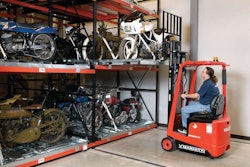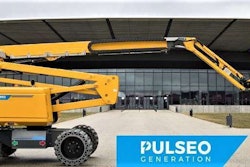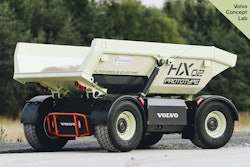 Rental’s upward swing was reflected on the floor of The Rental Show, held this February in New Orleans.
Rental’s upward swing was reflected on the floor of The Rental Show, held this February in New Orleans.Equipment World reached out to Tony Conant, CEO of the American Rental Association, to give us some insight on what’s happening in construction equipment rental industry.
 Conant
ConantEquipment World:What are the major driving forces in today’s construction equipment rental market?
Tony Conant:These are a combination of economics and technology. The total U.S. equipment rental market is primarily driven by factors that affect the overall economy, including consumer spending, business investment and construction activity. The construction side of the rental market – construction and industrial equipment and general tool — has closely followed the U.S. business cycle in recent years.
Improvements in the broader U.S. macro economy, such as 3.3 percent growth in both industrial production and construction employment, are sufficient to drive steady revenue growth for all segments of the equipment rental market. Consumer spending continues to drive U.S. growth, supported by rising employment, household wealth and real incomes — all helped by tax cuts. Business fixed investment will benefit from expanding global markets, an easing of regulatory policies and a more internationally competitive tax environment.
Other driving forces include new technology in both the equipment fleet and in the way rental companies operate their businesses.
Equipment World:How will these forces impact both rental companies and end users?
Conant:Provisions in the new tax code give both rental companies and construction businesses incentives to purchase more equipment. Even if contractors expand their own fleets, ARA expects them to use more rental equipment as a way to avoid overextending themselves and taking on the responsibilities and risks of equipment ownership.
We expect the North American equipment rental market to continue its upward trajectory by growing consistently over the next five years, raising the revenue from $52.3 billion in 2018 to $64.1 billion in 2022.
The worker shortage is having a significant impact on the equipment rental industry. From service technicians and qualified mechanics to delivery drivers, rental companies struggle to find the employees. This shortage is driving the industry toward further automation; driverless vehicles may ultimately be one solution. The equipment rental industry is also looking for public policy solutions aimed at getting more young people into the technical education pipeline. On the contractor side, this shortage could actually drive greater utilization of rental equipment.
New safety standards are also making equipment rental more attractive. Rules like the recent silica dust rule require new safety equipment along with the knowledge and training to use it properly. The complexity and safety requirements of mobile elevating work platforms also increase the demand for this equipment from rental companies that specialize in aerial rentals.
With all of these factors in play, we see a continuing move toward rental and away from equipment ownership. In 2017, ARA’s Rental Penetration Index, which measures the percentage of the total equipment fleet that is owned by rental companies, increased to 53 percent. This increase is a continuation of the shift toward rental that began in the wake of the financial crisis nearly a decade ago. While the rate of increase has slowed in recent years, many of the factors discussed here could drive rental penetration significantly higher over the next decade.
Equipment World:How will the rental industry be different five years from now?
Conant: Tax cuts – as provided by the Tax Cuts and Jobs Act (TCJA) — generally provide fiscal stimulus to the economy, which can lead to more investment by businesses and higher employment. This can push wages higher, thereby increasing consumer spending on goods and services as well as leisure activities. All of these trends benefit every segment of rental, especially construction/industrial and general tool/light construction. The TCJA will likely increase the net investment into new equipment for the rental fleet, prompting a quicker fleet modernization than would otherwise be the case. This will increase the efficiency of the rental fleet for many years to come.
Lead by asset management gains, equipment rental companies have become efficient over the past 20 years. Technologies built into today’s equipment allow predictive maintenance. This understanding helps rental operators know when best to replace older equipment. In addition, rental companies work closely with customers to make sure that equipment is on a jobsite when it is needed, increasing project management discipline. All of this improved efficiency is also being driven by the broader shift to the sharing economy that has been developing over the same 20-year period.
In many ways, equipment rental is one of the original sharing economies. As consumers continue to demand 24/7 service, the rental industry will continue to grow. This combination of increased net investment, a growing understanding of equipment life cycle management, partnering with customers to manage equipment needs, and the demand for equipment any time, any place bodes well for the equipment rental industry going forward.
Equipment World:What won’t change in the rental industry?
Conant: There is always going to be room in the equipment rental industry for the independent rental company that serves a particular market or fills a specific niche in a local market. Many of the largest rental companies focus on large contractors and use national contracts as the basis for their businesses. Smaller contractors as well as individuals who like to take on do-it-yourself projects are more likely to have a relationship with an independent rental company that both meets their needs and provides excellent customer service.














